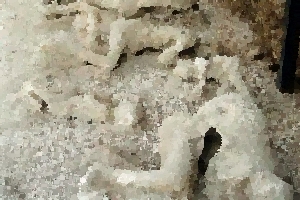Pompeii points you back to Italy's glorious past – destroyed by the ravages of nature and time, but still a wonder and beauty in its own right. It is, in fact, one of Italy's top tourist draws. This UNESCO-declared World Heritage Site was nearly lost to us except for its rediscovery (albeit by accident) in 1748. Excavations show a great city at the height of the grandeur that was Rome. A visit to Pompeii will give you a renewed appreciation of how the people lived at the Roman Empire's height.
Pompeii is nestled at the base of Pompeii, near Naples, in Campania. The city only reached its heyday when it became the playground of the wealthy during its time. However, Mount Vesuvius erupted in 79 A.D. and completely concealed the city under ash and pumice. Layers upon layers of rubble kept the ancient city covered for some two thousand years. Because of the suddenness of the event, the city is remarkably well-preserved. This is accounted for by the lack of moisture and air that kept deterioration at a bare minimum.
 Victims of the Vesuvius in Pompeii. [CC] credit.
Victims of the Vesuvius in Pompeii. [CC] credit.Here, you will see villas, baths, houses, and the Forum frozen in time and kept exactly the way it was during the 1st century. It is a delight to explore, as it provides amazing detail of everyday Roman life. This includes jars, frescos, wine bottles, tables, and many others. It shows a city that is progressive and modern for its time. It had an aqueduct that provided water for over 20 fountains and public baths, businesses and houses.
Make it a point to survey the other public buildings, foremost of the Forum or market. This is surrounded by three other buildings – the central basilica (which was built in honor of Madonna del Rosario di Pompeii), the Temple of Jupiter, and Apollo's Temple. The basilica is the largest building in the city. The public baths were also excellently preserved. There are graffiti on the walls showing that the young people are no different from the young people now. If you are a history buff, this is an excellent place to visit. The Via dei Sepolcri, a long street, spans several city blocks and has ruts for carriages.
One of the best-preserved houses in the area is the House of the Vettii. You will surely enjoy exploring this house with its semi-erotic frescoes, paintings and gardens. The most prominent frescoes in the house include the cupids found in the red-and-black dining room. There is also the House of the Mysteries (which has frescoes related to Bacchus, the god of wine) and the House of the Faun (named as such because of a faun statue). The House of the Faun also used to feature the mosaic of the Battle of Alexander the Great. However, this piece has been moved to the Museo Archeologico Nazionale in Naples. Other attractions include the Lupanare (brothel), the House of the Tragic Poet, the House of the Gilded Cupids, and the Great Theater (an open-air auditorium with a capacity of 5,000).
Make a journey of discovery to Rome's golden era and see how the other historic half lived. Pompeii is a city well-loved because of the historical gems waiting for you.